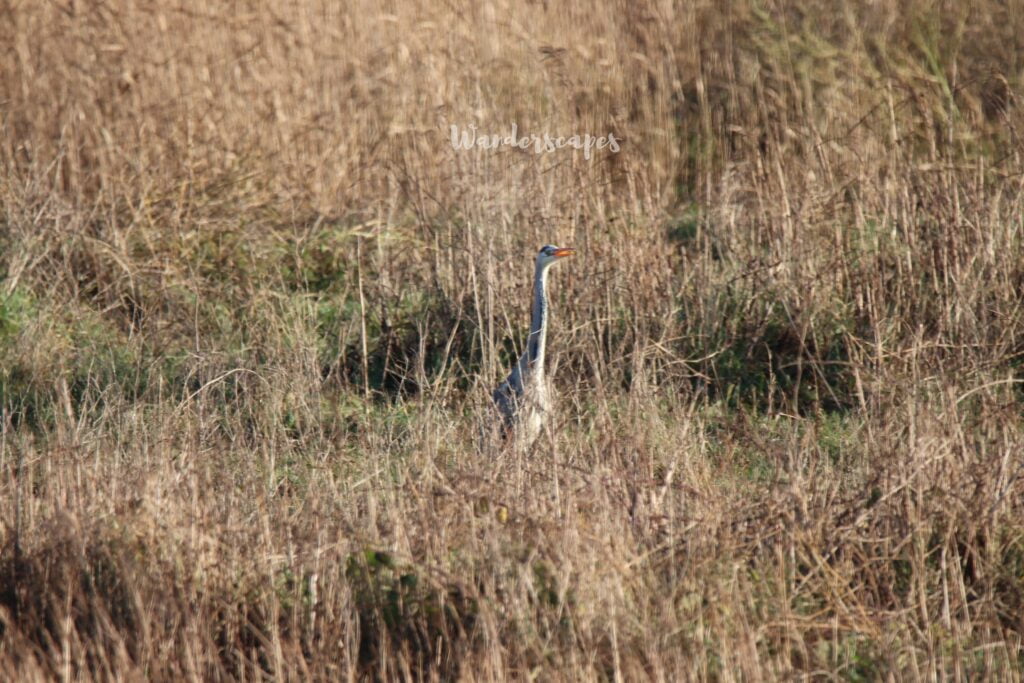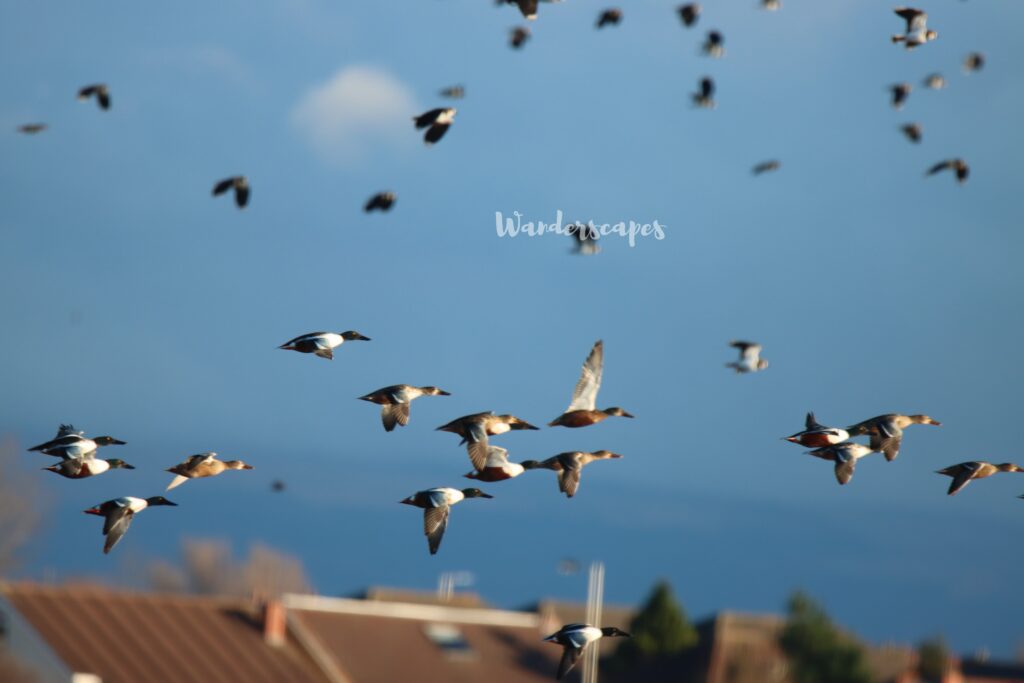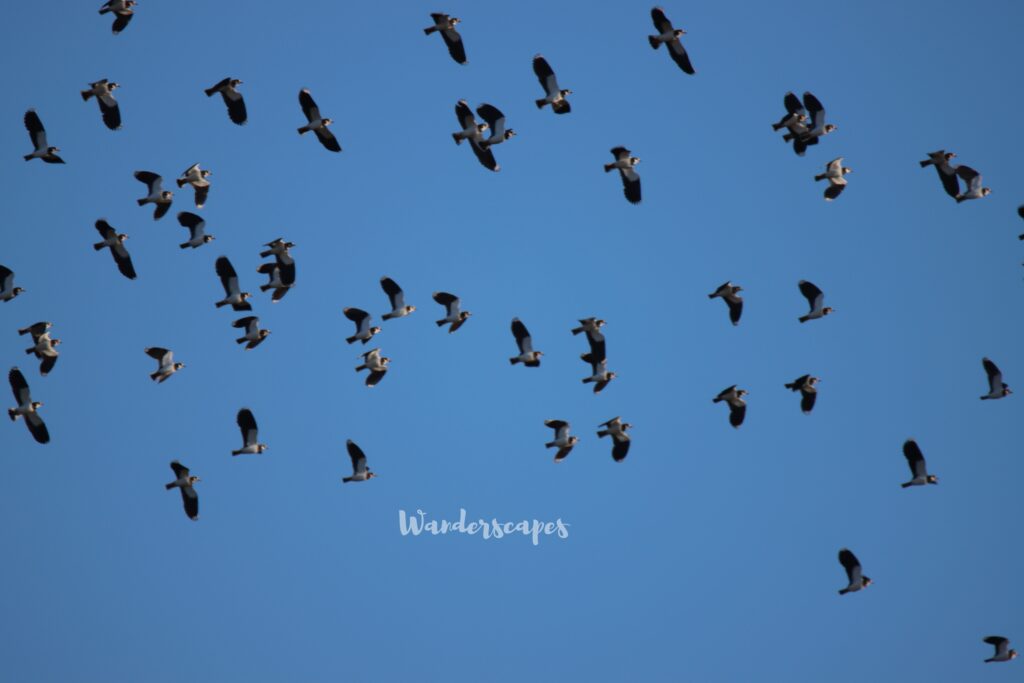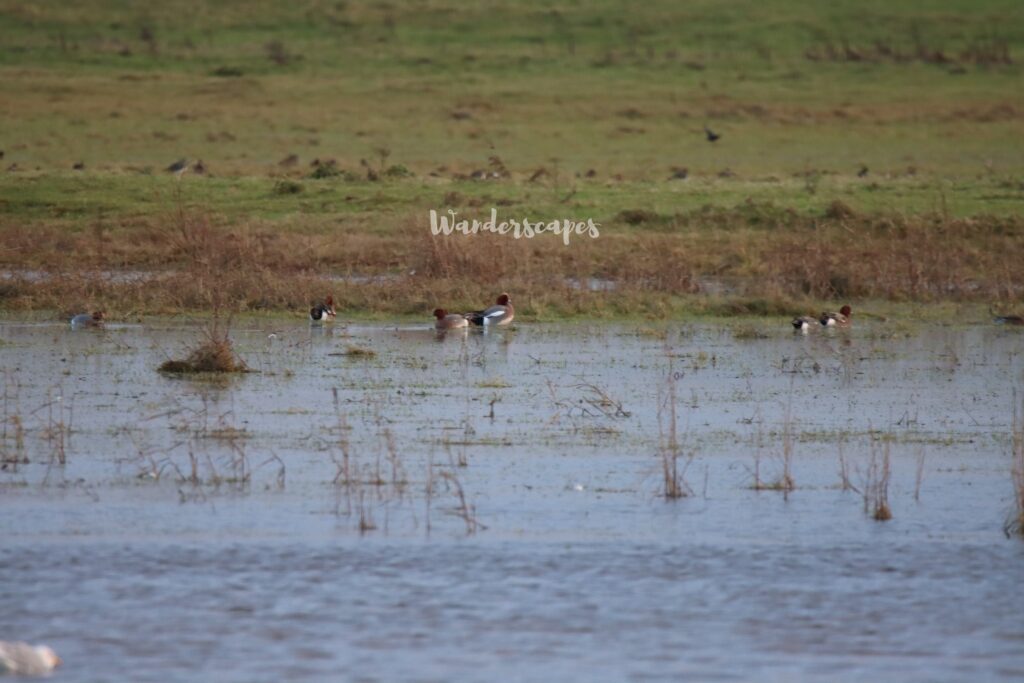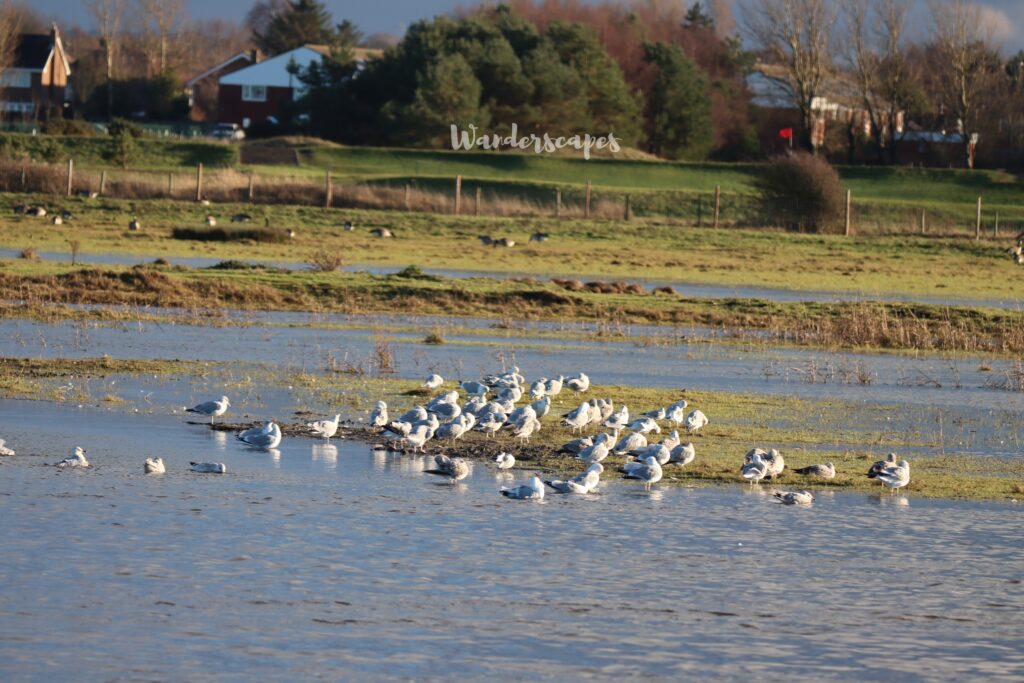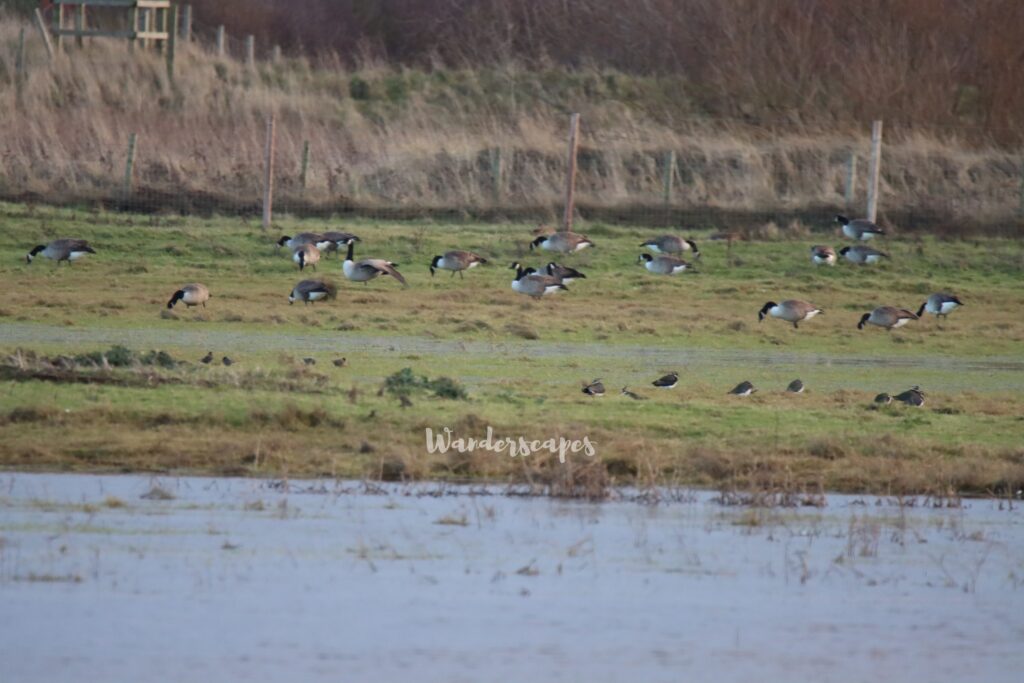Waking up to a glorious, sunny day feels heavenly, especially in winter. For us, it was a welcome change from the turbulent weather over the past two weeks or so. As we sat basking in the sun, we decided to make most of the sunny weather. So, we quickly made a packed lunch, filled the thermos with black coffee, grabbed our cameras and binocular, and headed to RSPB Marshside. Along with RSPB Burton Mere and WWT Martin Mere, Marshside is our go-to place when we need a dose of nature.
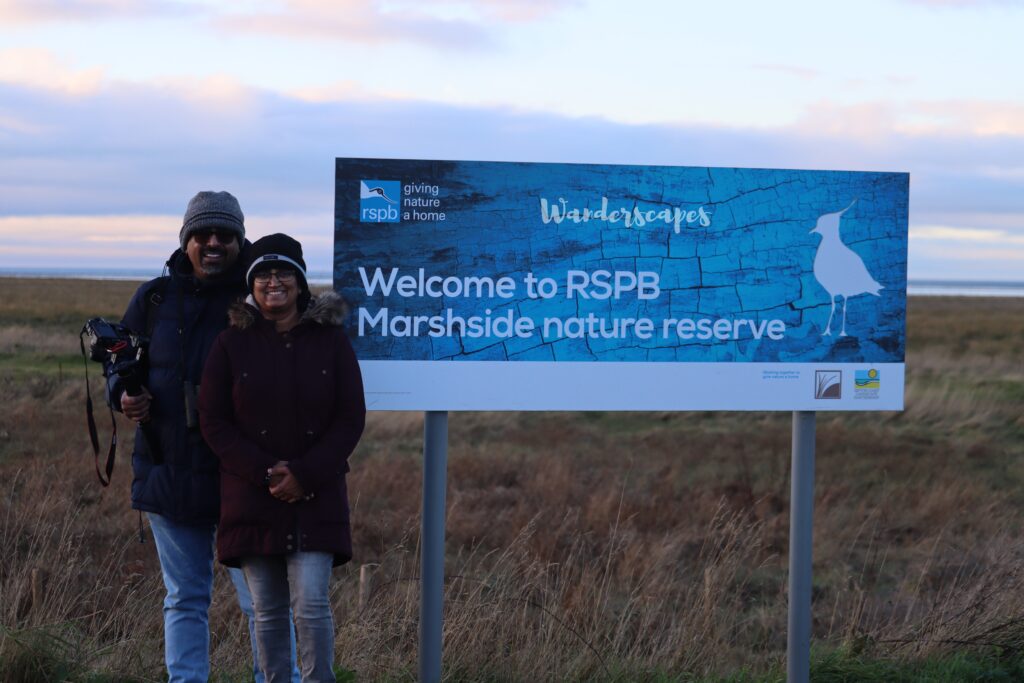
RSPB Marshside – A Birding Haven
Marshside is a wetland site managed by RSPB. A part of the Ribble Estuary National Nature Reserve and the Sefton Coast Partnership, it is 25 miles from our home in Liverpool. Located near Southport, a seaside town, Marshside is home to some of the best wildlife in the region and a place where you can spot birds all year round.
RSPB Marshside encompasses 155ha of coastal grassland and pools and 230ha of saltmarsh along the shores of Ribble estuary. RSPB strives to protect the breeding waders, wintering wildfowl, and other wildlife such as brown hares on the reserve.
Some of the key breeding birds of Marshside include lapwings, avocets and redshanks. Apart from these, certain species such as black-tailed godwits and ruffs are present throughout the breeding season. Some non-breeding birds found here include black-tailed godwits, pink-footed geese, wigeons, teals, shovelers, golden plovers, oystercatchers, knots, dunlins and curlews.
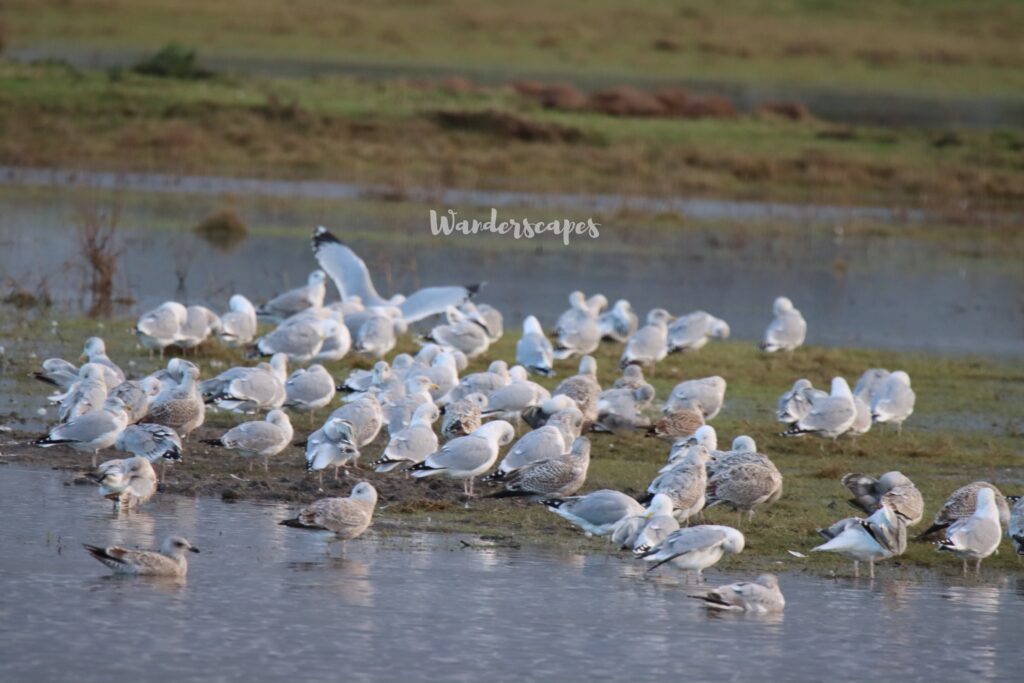
Varied Topographies of Marshside
Marshside has different topographies ideal for various species of birds.
Grassland
Grasslands are important for breeding waders. RSPB manages the site using summer grazing with cattle and topping to create a suitable habitat. RSPB aims to preserve up to 33ha of grassland to hold permanent surface water in winter, maintain the tussocky structure, increase the ungrazed grassland, and preserve the ‘dune-slack’ grassland, which is known for its rich wildflowers.
Water and swamp
RSPB states that it will ensure all permanent water bodies are at least 10cm deep at the start of June and increase the extent of open water in pools and ditches through rotational cleaning and re-profiling of ditches. The plan is to dig new ditches and create small pools to break up waterless ‘plain’ areas, create 1ha of open water, and an additional 1ha of swamp.
Apart from the various research projects, the focus is on breeding waders, lapwing nest productivity, wintering wildfowl, water voles, natterjack toads and butterflies.
Our Visit
We reached Marshside well past noon. After parking the car at the car park (parking is free for members), we walked to the reception hide (Sandgrounder’s hide). The place is usually packed with gulls – today, we couldn’t see any. It was strange not to hear the gulls mew. Without the hustle-bustle of the gulls and other noisy birds, it felt eerily silent.
There is a viewing platform and a viewing screen on the way to the main hide. Although we stood there scanning for birds, we saw nothing besides a shy grey heron and a few mallards.
Soon we reached the main hide. All birds were far away. Among the grass, we saw flocks of Canada and greylag geese. We spotted a few coots, moorhens and wigeons.
Exploring Marshside
We waited sometime for a close-up view of birds without any success. After some time, it was time to check another spot. We walked by the side of the reserve, watching a flock of lapwings flying up and down. The entire reserve was unusually silent.
Soon we traced back our steps and headed towards Nel’s hide. On the way, we stopped at the halfway viewing screen. Here again, we could see some birds, but afar. A couple of winters ago, we had seen plovers, ruff and other birds from here. Now, all we could see were some wigeon and lapwings. Feeling a little disappointed, we headed to Nel’s hide.
Nel’s Hide
It is the second hide in Marshside. We saw a group of gulls on the small island a bit ahead and a couple of Shelducks, several lapwings, some starlings, and geese. It was a beautiful sight with the right amount of light. But, soon, dark clouds loomed in, and we decided to go back before it started pouring again.
As we walked back to the car park, we saw several flocks of wood pigeons and a flock of Pink footed geese. It felt like all the other birds had gone into hiding – or were they isolating? Anyway, as we reached the car park, the clouds lifted and it was sunny again. So we decided to walk a bit through the path along the marsh.
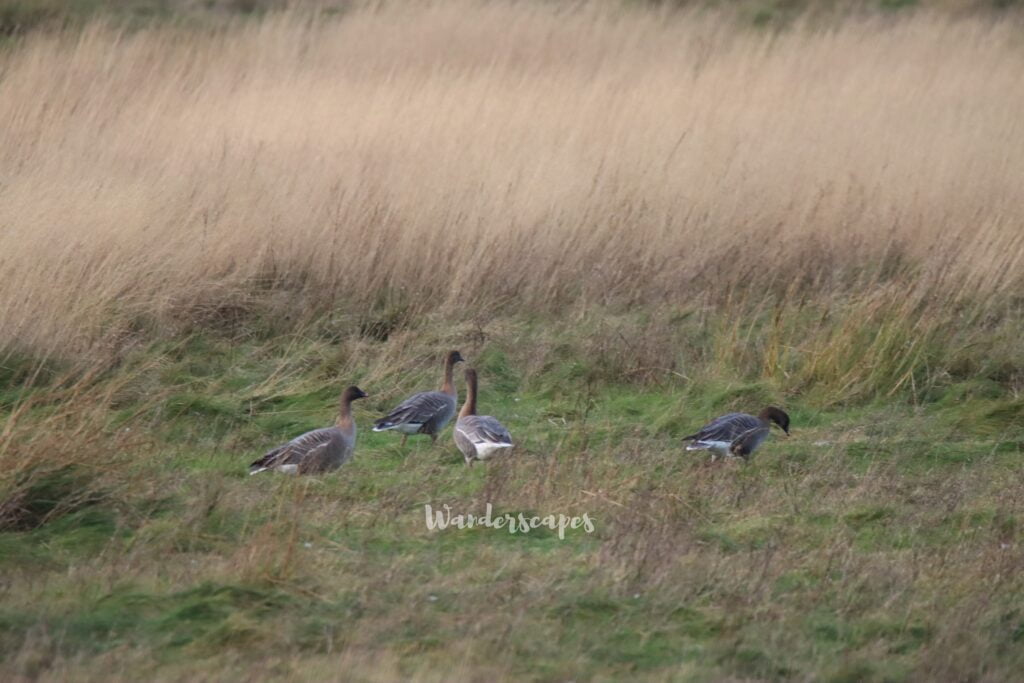
Marshside
The entire path was soggy, thanks to the wet weather and storms of the recent days. Thankfully elevated sides meant we could walk without getting our feet wet. We usually walk up to the sea – around a mile or so. But, this time, we decided we would not go all the way, partly because of the wet conditions and partly because the dark clouds were gathering again. So, after 10-15 minutes, we walked back to the car park.
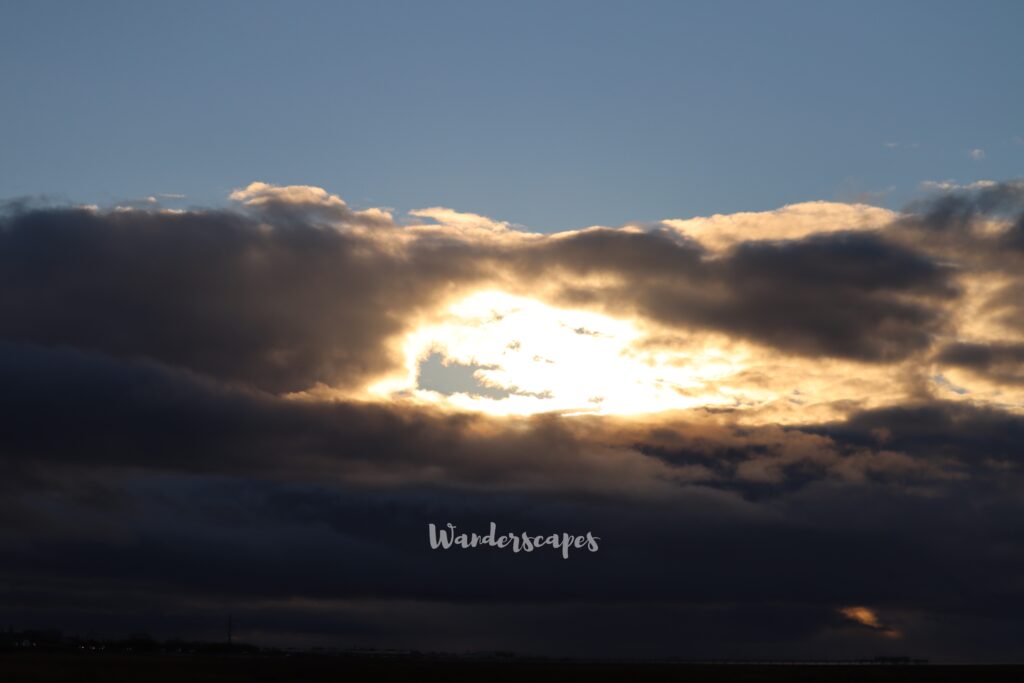
By the time we got into the car, it had started drizzling. It was just a few minutes past three in the evening, and it was getting darker by the minute. Although we spent a very short time at Marshside, we felt happy that we enjoyed a wonderful day, which lifted our spirits. Nature is the best medicine indeed.
Click here to watch our vlog on this visit
To read our previous blogs, click here

